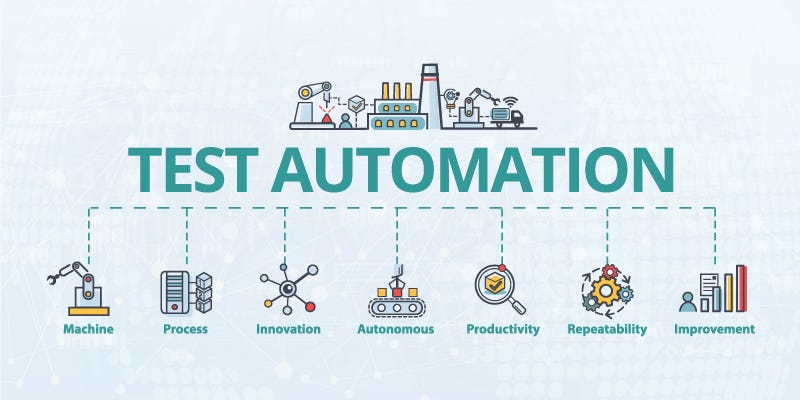The Best Guide to Implementing Automation Testing Successfully
From Handbook to Automated Screening: A Comprehensive Overview to Transitioning Efficiently and Properly
In the realm of software program testing, the change from manual to automated processes has ended up being a significantly vital change for companies seeking to enhance effectiveness and accuracy in their screening techniques. The trip from handbook to automated testing is not without its obstacles, but when approached strategically and with a clear plan in mind, the advantages can be significant.
Benefits of Automated Examining
Automated testing uses various advantages, enhancing efficiency and accuracy in software application growth processes. Automated tests can be run concurrently on numerous devices and running systems, substantially speeding up the testing stage contrasted to hands-on screening.
Moreover, automated screening ensures a higher degree of accuracy in detecting defects. Uniformity in screening is additionally boosted, as automated examinations carry out the same steps precisely each time they are run.
Picking the Right Devices

To start with, assess your requirements and purposes. Comprehend the extent of your project, the modern technologies entailed, and the capability of your team. This evaluation will certainly help you figure out the capabilities and features you call for in your testing tools.
Second of all, think about the compatibility of the tools with your existing systems and processes. Smooth integration with your existing software program development lifecycle is necessary to ensure a smooth transition to automation.
Furthermore, examine the scalability and adaptability of the devices. As your screening needs develop, the devices must have the ability to adapt and suit adjustments successfully.
Last but not least, consider the assistance and area around the devices. When implementing automated testing, robust support and an energetic user area can provide important resources and aid. By meticulously taking into consideration these facets, you can choose the right devices that align with your requirements and established the phase for a successful change to automated screening.
Creating Reliable Examination Scripts

When crafting test scripts, it is crucial to think about the particular demands of the software program being checked and make certain that the manuscripts address all important capabilities. Descriptive and clear naming conventions for test scripts and test cases can boost readability and maintainability. Furthermore, integrating error handling systems within the test manuscripts can aid in recognizing and resolving issues quickly.
Furthermore, organizing examination scripts into modular parts can improve reusability and scalability, lowering redundancy and enhancing efficiency in test script maintenance. Regular reviews and updates to test manuscripts are vital to maintain pace with developing software program needs and performances. By adhering to these concepts, testers can create reliable and robust test scripts that contribute dramatically to the success of automated screening processes.
Integrating Automation Into Workflows
Reliable combination of automation tools right into existing operations enhances and enhances processes performance within software development cycles. When integrating automation into workflows, it is important to recognize recurring tasks that can be automated to conserve time and reduce human error. By flawlessly integrating automated screening devices like Selenium or Appium right into the software program growth lifecycle, teams can accomplish faster responses on code modifications, causing quicker bug detection and resolution. This assimilation permits for continual testing throughout the advancement procedure, guaranteeing that any type of issues are identified beforehand, leading to greater software high quality. In addition, automation can be utilized to set off tests instantly after each code devote, providing instant recognition and releasing up testers to concentrate on even more facility circumstances. Correct integration of automation tools needs partnership between development, screening, and operations teams to establish a unified process that enhances efficiency and performance in supplying high-grade software.
Ensuring a Smooth Transition
Successfully transitioning to automated testing involves meticulous planning and cautious implementation to make best use of and lessen disturbances effectiveness in the software growth procedure - automation testing. To make certain a important site smooth shift, it is vital to begin by carrying out a comprehensive evaluation of the existing screening processes and identifying locations where automation can bring the most considerable advantages. Engaging with all stakeholders beforehand at the same time, consisting of designers, testers, and task managers, is important for amassing support and buy-in for the automation initiative
Interaction is key during this change stage. Clear communication of the objectives, benefits, and expectations of automated screening helps to take care of any kind of resistance or problems that might develop. Furthermore, supplying appropriate training and sources for employee to upskill in automation tools and methods is essential for guaranteeing an effective shift.

Verdict
Finally, transitioning from handbook to automated testing uses numerous advantages, consisting of raised performance and integrity. By selecting the appropriate tools, creating reliable examination manuscripts, and integrating automation perfectly right into operations, organizations can make certain a smooth and successful change. It is necessary to accept automation as a valuable asset in software application testing processes to improve overall top quality and efficiency.
In the realm of software screening, the shift from handbook to automated processes has ended up being a significantly important transition for companies looking for to enhance performance and accuracy in their screening practices. Automated tests can be run simultaneously on several gadgets and running systems, considerably speeding up the screening stage contrasted to manual screening. Uniformity in screening is likewise enhanced, as automated examinations execute the very same actions exactly each time they are run.To ensure the effective execution reference of chosen testing devices, the development of reliable test scripts plays a vital function in validating the performance and efficiency of automated procedures - automation testing. By adhering to these concepts, testers can develop check that robust and efficient test manuscripts that contribute dramatically to the success of automated testing procedures